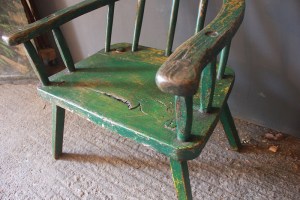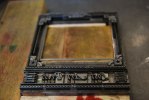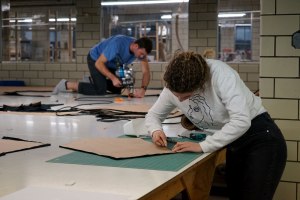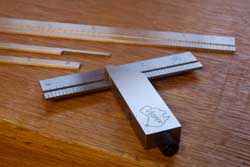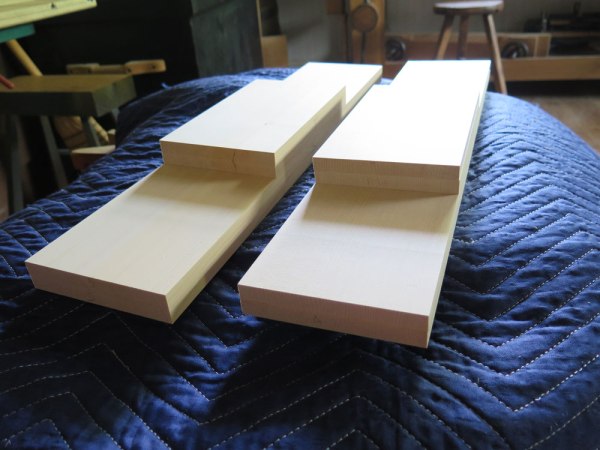Review: ‘Carving the Acanthus Leaf’ by Mary May –
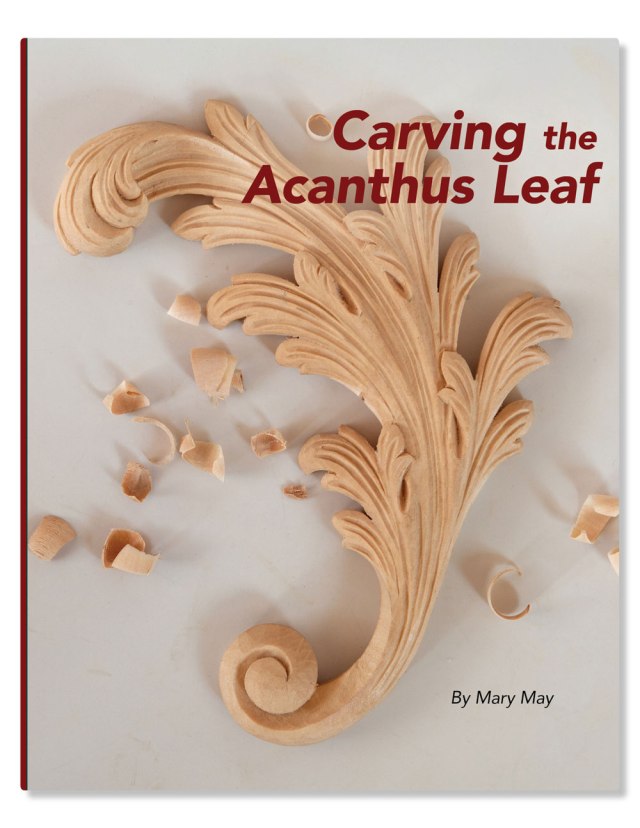 Mary May probably didn’t realize the unintended consequences of one of her chapter titles: “A Rite of Passage for the Classical Carver.” She doesn’t yet know how often she will have to don ministerial robes and confer rites of passage on those who learn to carve acanthus leaves, severely disrupting her woodcarving life.
Mary May probably didn’t realize the unintended consequences of one of her chapter titles: “A Rite of Passage for the Classical Carver.” She doesn’t yet know how often she will have to don ministerial robes and confer rites of passage on those who learn to carve acanthus leaves, severely disrupting her woodcarving life.
A “Rite of Passage” is usually something that marks a significant milestone in one’s life. Yet, with Mary’s teaching techniques, passing that milestone just became significantly easier. Besides, most everyone who has attended one of Mary’s in-person classes has already passed the “acanthus milestone.” A simple Acanthus leaf, similar to the first project in this book, is a frequent staple of her classes. Even as a klutzy beginning woodcarver, I brought home an acanthus carving from my first class with her. She makes acanthus carving accessible and achievable.
This book will certainly increase the number of acanthus carvers in this world.
Mary’s step-by-step descriptions and illustrations take you by the hand and lead you on a wonderful journey that includes 13 different acanthus leaf variations. Don’t worry, this is not a journey of increasing difficulty, but one of exploring different uses and different styles. All of them are achievable. Mary guides us through: the basic leaf carving, on mouldings, on cabriole legs, on a turning, on a bracket. And she offers us different styles: the simple leaf, Italian renaissance, Scandinavian, Greek, French Rococo, Baroque.
One might expect this to be simply a how-to book about carving acanthus leaves. It is, but very much more. Yes, we learn to both draw and carve leaves. But Mary also offers a richly illustrated and detailed discussion of the history of the acanthus. Mary leads us through centuries of cultural and stylistic variations. Once we become aware, we’ll start seeing acanthus leaves everywhere.
Interspersed among the carving lessons are short stories from her life. Some of the themes are: miles of mouldings, never too old to carve, display a carving and catch a husband, “opportunities” not mistakes, the atypical jack-o’-lantern, and the young bride in a bed full of wood chips. These are simply delightful insights to how Mary May has become the masterful carver she is today.
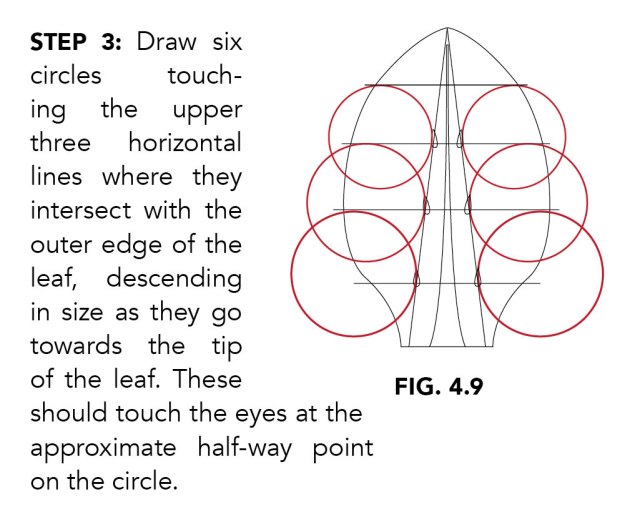
On the Technical Side
Mary includes a wholesome “Getting Started with Woodcarving” chapter that is actually a mini-course in beginning woodcarving. She highlights tools and equipment, safety, the all important grain-following techniques, layout tips and tool sharpening techniques.
Yet another “Getting Started” chapter dives into the acanthus itself, with a detailed lesson in leaf anatomy followed by instruction on how to draw and carve a typical leaf. Here we see the beginning of Mary’s step-by-step illustrations. Hundreds of these illustrations and photographs are effective substitutes for when Mary can’t be standing beside the workbench helping us learn.
Drawing instructions? Do we really need to learn to draw to be able to carve effectively? Mary suggests that learning to draw is helpful, that it builds confidence in understanding the design before committing tools to wood.
I agree, from experience…. A little personal diversion: I once undertook a lengthy stay at a place where it was inconvenient to drag along carving tools, my workbench and all the other comforts of carving. Instead, I took a copy of someone else’s book about acanthus leaves, a few pencils, a pad of paper and a big eraser. I spent many hours drawing from photos in that book. I learned that the best looking acanthus leaves are dependent on the constantly changing curves being just right. It was time well spent. Subsequent carving was much easier.
These drawing lessons, one general lesson and one for each leaf, actually double the value of this book. Drawing, for me, is a gateway to understanding carving. When I get a good feeling for the object with the low-cost investment of paper and pencil, the actual carving is enjoyable and stress free. Maybe you will find the same benefit. For those who want to skip drawing, there are drawings provided for each chapter.
By the way, as an “enginerd,” my day job has always been precise and used concise tools. The engineering mindset told me that one can’t make a curve of constantly changing radius, such as a natural spiral, with a fixed-radius tool such as a compass. Mary’s drawing lesson changed that mindset. She shows very clever ways to use fixed-radius drawing tools to get very close to the constantly changing curves we need for the spiral forms of acanthus leaves.
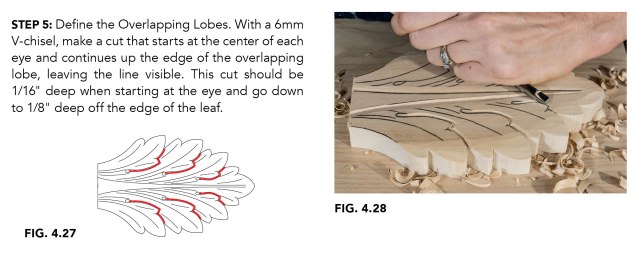
Mary goes on to entertain us with short stories and 13 spectacular carving lessons. Every lesson includes a description of the leaf and photos of how carvings are used in real situations, typically on furniture, or architectural pieces. Then comes a section about drawing, and a section about carving that particular leaf, all abundantly illustrated with step-by-step drawings and photos.
Stock up on paper, pencils and basswood. Prepare for many hours of thoroughly enjoyable carving, and get ready for your rapidly approaching “Rite of Passage.”
Order the book from the Lost Art Press website here. The book ships in late November. You can download a free sample chapter via this link.
This review is based on the digital PDF that one can receive with early ordering. I have not yet held the actual book. It is 8-1/2” x 11”, 336 pages. Christopher Schwarz has promised it to be a durable book that can lie flat on the carving bench, and he always delivers what he promises.
— Bob Easton
About Bob Easton: After 40 years in the Information Technology industry, many as a software engineer, Bob turned to woodworking about 10 years ago. He entered through the door marked “small boats,” built a couple of rudderless boats and then slowly drifted over to woodcarving. He was blessed to meet Mary May many years ago and helped her establish the website for her online Woodcarving School (https://www.marymaycarving.com/carvingschool/). Bob occasionally adds drivel to his own blog at https://bob-easton.com/blog/

